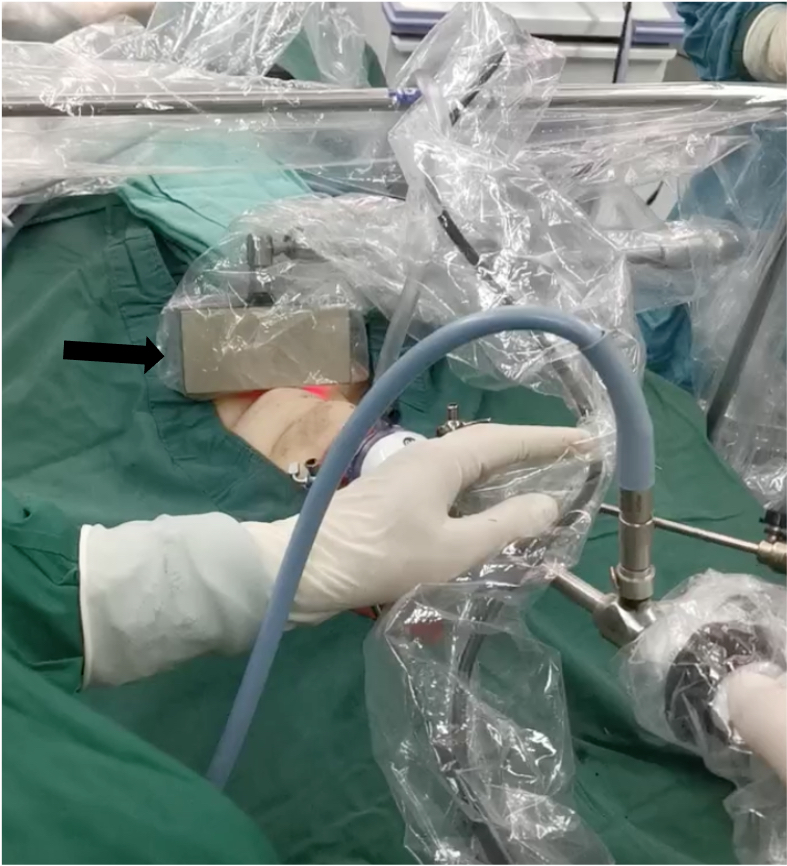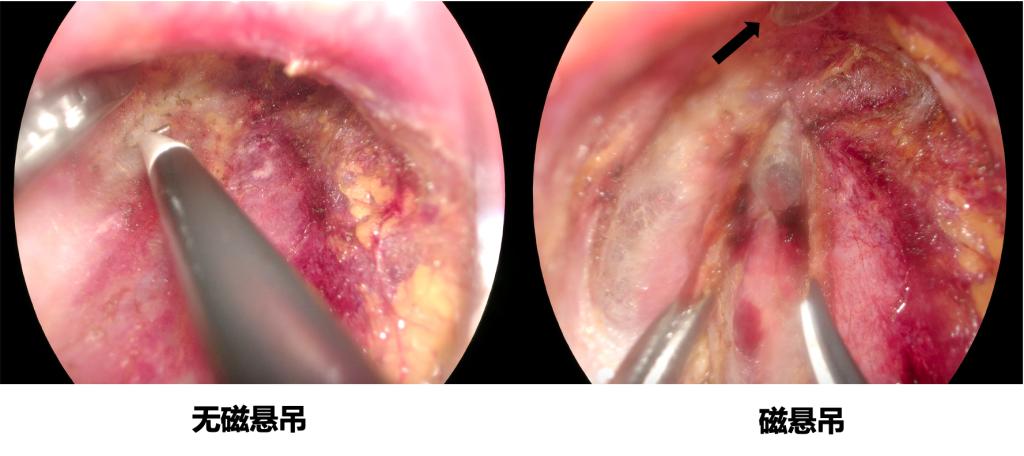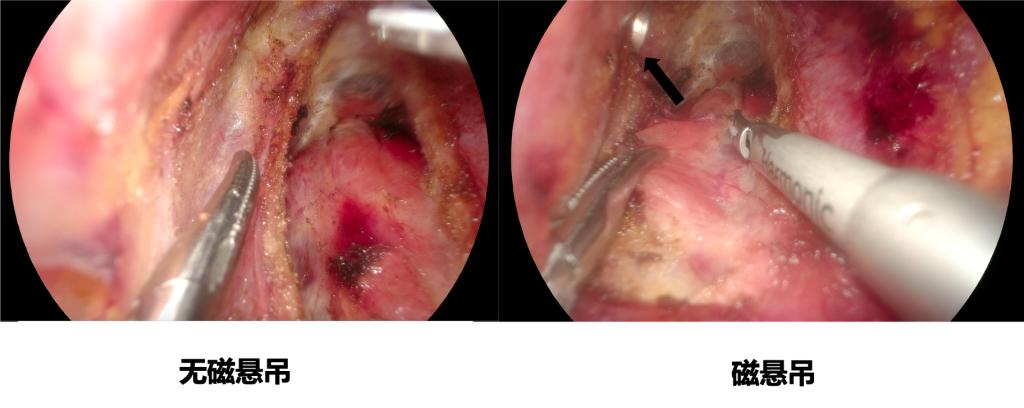On November 19, Department of Otorhinolaryngology-Head and Neck Surgery of the First Affiliated Hospital of Xi’an Jiaotong University (XJTU) successfully performed the first case of magnetic anchor suspension-assisted transoral endoscopic thyroidectomy in the world. Under the guidance from Department of Magnetic Surgery team led by Professor Lyu Yi, the surgery was jointly performed by Director Zhang Shaoqiang, Deputy Director Yao Xiaobao and Dr. Kou Bo from Department of Otorhinolaryngology-Head and Neck Surgery.
As a novel surgical approach for thyroid surgery, transoral endoscopic thyroidectomy has the following advantages. First, the surgical incision is hidden in the oral vestibule. Hence, patients have no visible scars on the neck after surgery. Second, transoral endoscopic thyroidectomy significantly mitigates postoperative pain of patients because no skin and subcutaneous incisions are created. Third, due to the magnification under endoscope, the recurrent laryngeal nerve and parathyroid can be better exposed, the recurrent laryngeal nerve and parathyroid injury (postoperative complications of bilateral thyroids are the most severe) can be minimized. Fourth, the neck lymph node dissection can achieve similar efficacy of open surgery.
However, compared with open thyroidectomy, endoscopic thyroidectomy is more difficult to create surgical chamber, requires more complex procedures and leaves narrower space for the neck. To avoid the incidence of subcutaneous emphysema, the pressure of CO2injection should not be excessively high. Otherwise, it will cause insufficient exposure of the cervical flap when freeing the cervical flap. Therefore, the cervical flap has to be pulled and suspended by suturing. In addition, during endoscopic thyroidectomy, a thyroid retractor hook needs to be inserted via neck puncture to pull the ribbon muscle to create the surgical chamber, which affects the aesthetic appearance of the neck to certain extent.
Magnetic anchor suspension technique can be applied to assist flap exposure in the superficial organ surgery, which has been successfully employed in mastectomy. This technique can fully suspend the cervical flap and resolve the problem of insufficient flap exposure after CO2injection alone. The inner magnet is placed under the ribbon muscle, and the ribbon muscle can be pulled outward by the external magnet, which can replace the thyroid retractor to fully expose the surgical field of the thyroid and reduce the risk of secondary injury to vital organs surrounding the thyroid. Meantime, the magnetic anchor suspension technique is non-invasive and does not cause injury to the neck skin of of the patients, thereby achieving the optimal cosmetic effect.
After persistent promotion for several years, a series of magnetic surgery techniques have been successfully applied in Department of Hepatobiliary Surgery, Department of Thoracic Surgery, Department of Obstetrics and Gynecology, Department of Breast Surgery, Department of Digestive Medicine of our hospital. The successful implementation of magnetic anchor suspension-assisted transoral endoscopic thyroidectomy signifies the beginning of the cooperation between Department of Magnetic Surgery team and Department of Otorhinolaryngology-Head and Neck Surgery. Two departments expect to collaboratein multiple fields, such as hemostasis of epistaxis assisted by magnetic compression and magnetic anchor traction-assisted buccal mucosal resection,etc.

External body photo of magnetic anchor suspension

Photo of magnetic anchor suspension-assisted cervical flap

Photo of magnetic anchor suspension-assisted ribbon muscle